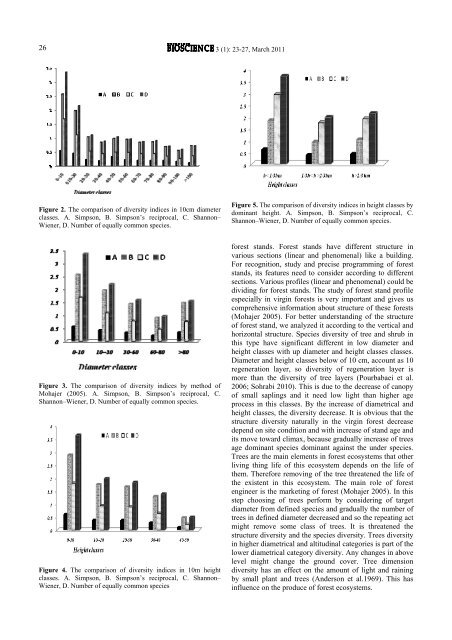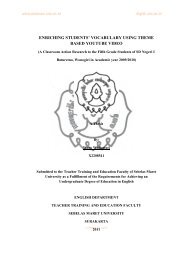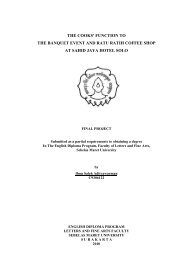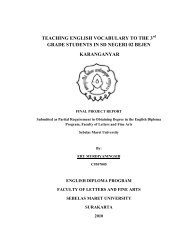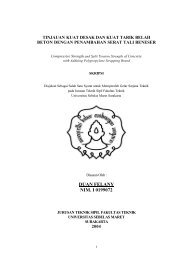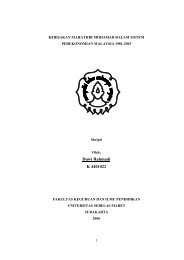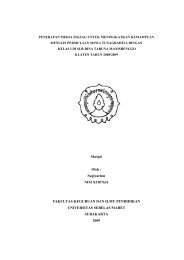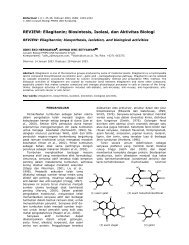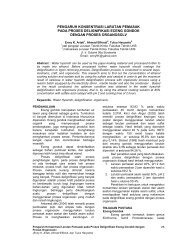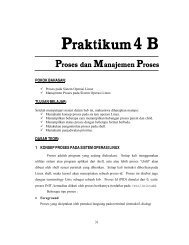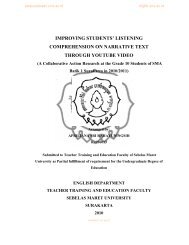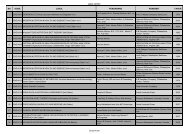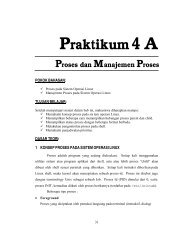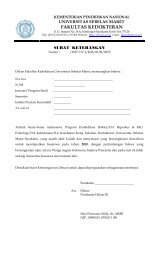ISSN 2087-3940 (PRINT) | ISSN 2087-3956 ... - Biodiversitas
ISSN 2087-3940 (PRINT) | ISSN 2087-3956 ... - Biodiversitas
ISSN 2087-3940 (PRINT) | ISSN 2087-3956 ... - Biodiversitas
Create successful ePaper yourself
Turn your PDF publications into a flip-book with our unique Google optimized e-Paper software.
26<br />
3 (1): 23-27, March 2011<br />
Figure 2. The comparison of diversity indices in 10cm diameter<br />
classes. A. Simpson, B. Simpson’s reciprocal, C. Shannon–<br />
Wiener, D. Number of equally common species.<br />
Figure 5. The comparison of diversity indices in height classes by<br />
dominant height. A. Simpson, B. Simpson’s reciprocal, C.<br />
Shannon–Wiener, D. Number of equally common species.<br />
Figure 3. The comparison of diversity indices by method of<br />
Mohajer (2005). A. Simpson, B. Simpson’s reciprocal, C.<br />
Shannon–Wiener, D. Number of equally common species.<br />
Figure 4. The comparison of diversity indices in 10m height<br />
classes. A. Simpson, B. Simpson’s reciprocal, C. Shannon–<br />
Wiener, D. Number of equally common species<br />
forest stands. Forest stands have different structure in<br />
various sections (linear and phenomenal) like a building.<br />
For recognition, study and precise programming of forest<br />
stands, its features need to consider according to different<br />
sections. Various profiles (linear and phenomenal) could be<br />
dividing for forest stands. The study of forest stand profile<br />
especially in virgin forests is very important and gives us<br />
comprehensive information about structure of these forests<br />
(Mohajer 2005). For better understanding of the structure<br />
of forest stand, we analyzed it according to the vertical and<br />
horizontal structure. Species diversity of tree and shrub in<br />
this type have significant different in low diameter and<br />
height classes with up diameter and height classes classes.<br />
Diameter and height classes below of 10 cm, account as 10<br />
regeneration layer, so diversity of regeneration layer is<br />
more than the diversity of tree layers (Pourbabaei et al.<br />
2006; Sohrabi 2010). This is due to the decrease of canopy<br />
of small saplings and it need low light than higher age<br />
process in this classes. By the increase of diametrical and<br />
height classes, the diversity decrease. It is obvious that the<br />
structure diversity naturally in the virgin forest decrease<br />
depend on site condition and with increase of stand age and<br />
its move toward climax, because gradually increase of trees<br />
age dominant species dominant against the under species.<br />
Trees are the main elements in forest ecosystems that other<br />
living thing life of this ecosystem depends on the life of<br />
them. Therefore removing of the tree threatened the life of<br />
the existent in this ecosystem. The main role of forest<br />
engineer is the marketing of forest (Mohajer 2005). In this<br />
step choosing of trees perform by considering of target<br />
diameter from defined species and gradually the number of<br />
trees in defined diameter decreased and so the repeating act<br />
might remove some class of trees. It is threatened the<br />
structure diversity and the species diversity. Trees diversity<br />
in higher diametrical and altitudinal categories is part of the<br />
lower diametrical category diversity. Any changes in above<br />
level might change the ground cover. Tree dimension<br />
diversity has an effect on the amount of light and raining<br />
by small plant and trees (Anderson et al.1969). This has<br />
influence on the produce of forest ecosystems.


